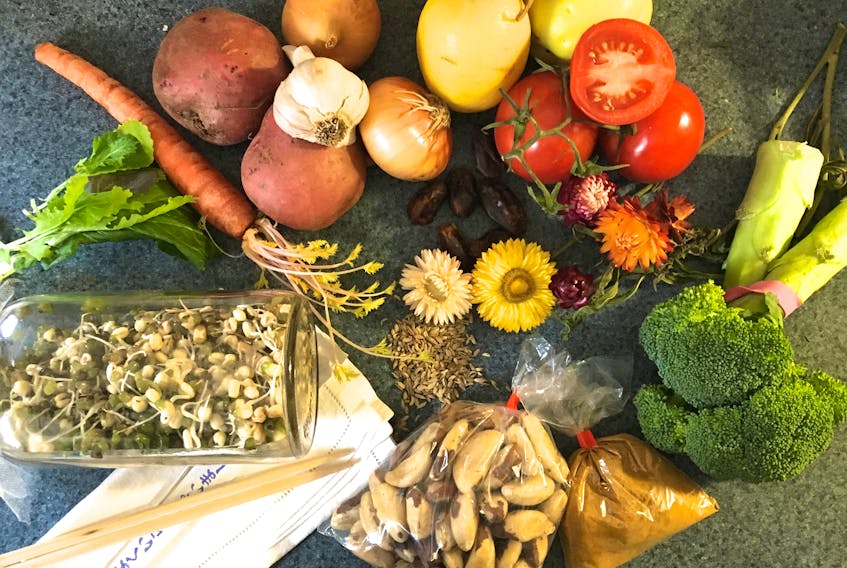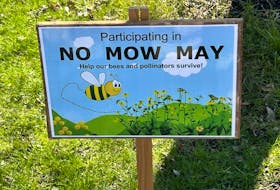TRURO, N.S. — Canadians now have a practical tool that creates an opportunity for balance at every meal. The new Canada’s Food Guide describes not only what Canadians should eat, but how we should eat.
Incorporating a variety of healthy foods at each meal helps us eat well and live well. The new guide concentrates on including more plant foods. Eating a more plant-based diet can lower the risk of chronic health conditions such as heart disease, high blood pressure and high cholesterol.
What’s new?
The new guide takes a broader approach by focusing on the proportion of foods rather than portion sizes. It recommends filling half your plate with vegetables and fruit, one-quarter with whole grains and one-quarter with protein foods. The familiar four food groups are a thing of the past, and there are no longer recommended serving sizes or numbers of servings.
The guide also considers cultural preferences, food traditions and environmental impacts. It lends solid advice on how to encourage families to enjoy food, eat together, and cook more often and to be mindful of eating habits.
Boost your vegetables and fruit
Make vegetables and fruit the star of your plate. Fill one-half your plate at every meal. Vegetables and fruit are full of fibre, antioxidants, vitamins and minerals. Fresh, frozen and canned vegetables and fruits are all good choices.
• Make it easy. Buy ready-to-eat vegetables such as cherry tomatoes, pre-washed salad greens and baby carrots. Look for pre-cut fruit and vegetables.
• Use frozen vegetable mixes such as spaghetti, soup or slow cooker varieties.
• Keep canned or frozen fruit on hand for fruit salad or smoothies.
• Add extra vegetables to pasta sauce, casseroles and soup.
• Add dried fruit to cereal or oatmeal.
• Roast or grill vegetables and fruit for a new flavour. Try peppers, cauliflower, squash, peaches or pineapple.
Protein power
The one-quarter plate of protein foods replaces the former Milk and Alternatives and Meat and Alternatives food groups. The new guide suggests eating plant-based protein more often, but still includes fish, seafood, meat, poultry and eggs.
Plant-based proteins include beans, lentils, nuts, seeds and soy products. They have less saturated fat and more fibre, and are easy on our wallets.
Here are some easy ways to start including more plant-based protein foods in your meals:
• Start small. Gradually increase plant protein sources at meals. Try swapping half the meat for plant-based protein in recipes.
• Make one meatless meal during the week.
• Stock your kitchen with a variety of canned beans and lentils. Simply drain and rinse before adding to your recipes.
• Top salad and stir-fry with chickpeas, almonds or cashews.
• Stir black beans into your favourite rice dish or add to salsa for a more filling dip.
• Add dried lentils to homemade soup. They cook quickly without the need to presoak.
• Choose a flavored hummus as a dip for veggies.
• Snack on roasted chickpeas or soy nuts.
Including fish and seafood in meals gives you healthy fats and protein. Meat and poultry put protein, iron and vitamin B12 on your plate.
To make your heart happy and healthy, have a meal with fish or seafood at least twice a week and choose lean cuts of meat or skinless poultry.
Although dairy products no longer have their own food group, they still have a place in Canadian diets as part of the one-quarter plate of protein foods. Dairy products such as lower fat milk, yogurt, kefir and cheese provide protein and important nutrients like calcium and vitamin D.
Go whole grain
Fill one-quarter of your plate with grains at meals. Choose whole grains most often.
• Choose breads made with 100-per-cent whole grain whole wheat or rye.
• Try whole grain pasta instead of white.
• Use quinoa in place of rice or noodles in cold salads.
• Use millet or quinoa in place of couscous for a whole grain that’s the same shape.
• Enjoy popcorn as a snack.
• Use cooked bulgur, freekeh or brown rice in a salad bowl.
• Add barley, brown rice or corn to soup.
• Swap quinoa, barley, oat groats or bulgur for rice in pilaf or risotto recipes.
Personalize it!
Canada’s Food Guide provides general guidance for healthy Canadians. If you have individual dietary concerns or health conditions, get advice from a registered dietitian on how to personalize it to meet your needs.
Registered dietitians are the only regulated nutrition professionals in Canada. We have the unique education, training and experience to find food solutions that work for you and your family.
Salmon with chickpeas and spinach sauté
Prep time: 10 minutes
Total time: 20 minutes
Serves: 4
Ingredients:
1 lb (500 g) Fresh salmon fillets or any pink-fleshed fish
2 tbsp (30 mL) Olive oil
19 oz can (540 mL can) No salt added chickpeas, rinsed and drained
2 Green onions, finely chopped
2 cloves Garlic, minced
1 pkg (5 oz /150 g) Baby spinach (approx. 5 cups/1.25 L loosely packed spinach)
¼ tsp (1 mL) Salt
Directions:
1. Cook salmon in two Seafood Steamer bags with dill-lemon butter pucks according to package directions.
2. Heat oil in large skillet on medium-high heat. Add chickpeas, green onions and garlic. Cook 4 to 5 minutes or until heated through and garlic softens. Add spinach and salt. Continue to sauté, 3 to 4 minutes until spinach starts to wilt.
3. Divide chickpea mixture onto 4 plates. Top each with piece of salmon and drizzle with melted butter and juices from steamer bags.
Dietitian Tip: No steamer bag? Sprinkle salmon with lemon juice and dill. Bake at 400 F for 10 minutes for every inch of thickness.
Nutrition Information per Serving (¼ of the recipe):
Calories 450, Fat 22 grams, Saturated fat 6 grams, Carbohydrate 28 grams, Fibre 7 grams,
Protein 36 grams, Sodium 310 milligrams
Hungry for more? Follow @SobeysDietitian on Facebook and Twitter for more tips and recipes.
To receive our Healthy Bits and Bites Newsletter, sign up at ww.sobeyspharmacy.com/newsletter.
Upcoming nutrition classes: Do you want to add more plant proteins to your meals? Join Jennifer for a Cooking for Heart Health: Plant Based Proteins class and get inspired to change your meals and improve heart health with simple ingredients. Tuesday, April 30, 4:30 to 6 p.m. Register at 902-895-7382.
-Jennifer Ferguson is a Sobeys dietitian in Truro.









